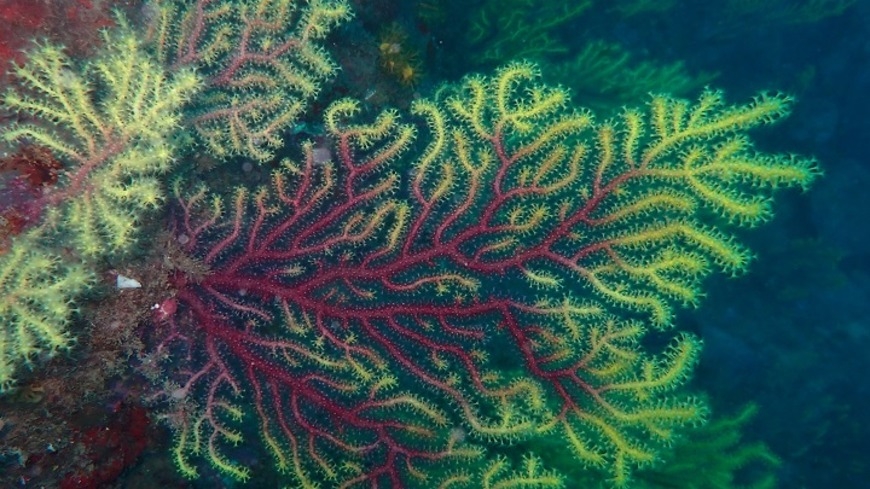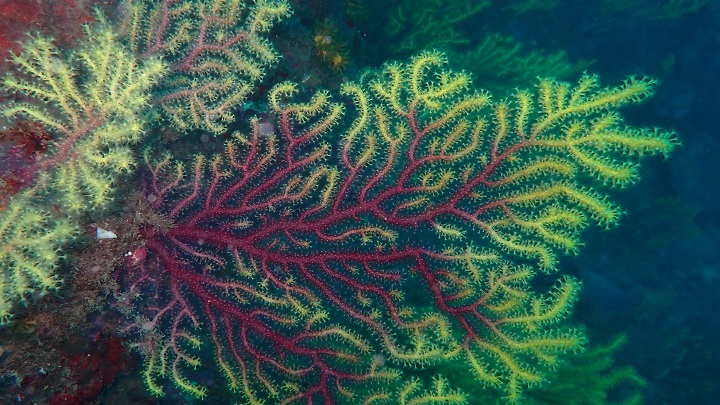We reach more than 65,000 registered users in Dec!! Register Now

Publication of the first global macrogenetic map of marine habitat-forming species
- May 26, 2023
- 20 Views
- 0 Likes
- 0 Comment
Species known as marine habitat-forming species —gorgonians, corals, algae, seaweeds, marine phanerogams, etc.— are organisms that help generate and structure the underwater landscapes. These are natural refuges for other species, and provide biomass and complexity to the seabeds. But these key species in marine ecosystems are currently threatened by climate change and other perturbations derived from human activity. Now, a study published in the journal Global Ecology and Biogeography warns that even in the marine protected areas (MPAs) the genetic diversity of structural species is not protected, although it is essential for the response and adaptation of populations to changes that alter the natural environment.
The study was carried out by Laura Figuerola-Ferrando, Cristina Linares, Ignasi Montero-Serra and Marta Pagès-Escolà, from the Faculty of Biology of the University of Barcelona and the Biodiversity Research Institute of the UB (IRBio); Jean-Baptiste Ledoux and Aldo Barreiro, from the Interdisciplinary Centre of Marine and Environmental Research (CIIMAR) in Portugal, and Joaquim Garrabou, from the Institute of Marine Sciences (ICM-CSIC). The study warns that even in marine protected areas, the genetic diversity of marine habitat-forming species such as corals, gorgonians and macroalgae is not protected
The study warns that even in marine protected areas, the genetic diversity of marine habitat-forming species such as corals, gorgonians and macroalgae is not protected
Genetic diversity is also a component of biodiversity
Traditionally, marine biodiversity management and conservation plans have considered factors such as species richness. Genetic diversity —another major component of biodiversity— reflects the genetic variation that exists among organisms of the same species and is a determining factor in the adaptive capacity of populations and their survival. Despite its importance, genetic diversity has so far been overlooked in management and conservation plans.
"Genetic diversity plays a key role in enhancing the ability of species, populations and communities to adapt to rapid environmental changes resulting from climate change and thus increase their resilience", says researcher Laura Figuerola-Ferrando, first author of the study.
“However, —she continues— so far, the vast majority of marine protected areas are implemented based on the presence of several species and habitats, without considering their genetic diversity. Another example would be the red list of the International Union for Conservation of Nature (IUCN), which does not consider genetic diversity either”.
"In recent years, the need to focus conservation efforts on the protection of genetic diversity has been reinforced. Technological progress in the massive development of different techniques to determine genetic diversity (for example, through the use of microsatellites or small DNA fragments), as well as their affordable cost, can help to include genetic diversity in management and conservation plans", says the researcher from the Department of Evolutionary Biology, Ecology and Environmental Sciences of the UB.
From the northwest Atlantic to the Gulf of Guinea
The study applies macrogenetic techniques to identify general genetic patterns of diverse marine species at large spatial scales. The authors have analyzed data from a global database containing genetic diversity information (based on microsatellites) for more than 9,300 populations of 140 species in different marine regions around the globe.
The results outline a reference scenario of genetic patterns in marine habitat-forming species (corals, macroalgae, marine phanerogams, etc.) of potential interest for improving marine life management and conservation plans.
The northwest Atlantic provinces and the Bay of Bengal are the regions where the highest genetic diversity in marine landscape species has been identified. Quite high values (above the global average) have also been identified in the Mediterranean. In contrast, the marine provinces with the lowest values of genetic diversity are the Gulf of Guinea and the southwest Atlantic.
The findings also indicate a positive correlation between genetic diversity and species richness of both animal and plant marine habitat-forming species. However, the paper warns of a worrying result: the Network of Marine Protected Areas (RAMP) in the large oceanic ecoregions does not preserve areas where the genetic diversity of marine habitat-forming species is highest.
"What we have seen is that what is not being protected in MPAs is genetic diversity. In the study, the initial hypothesis was that within these areas there would be greater genetic diversity, but this has not been the case. In fact, we have seen, at a global level, that there are no differences in genetic diversity between inside and outside the MPAs", notes Laura Figuerola-Ferrando, who is doing her doctoral thesis under the supervision of Cristina Linares (UB) and Joaquim Garrabou (ICM-CSIC).
A new pattern of equatorial biodiversity at the poles
The authors have also identified a specific pattern in the distribution of genetic diversity of the marine habitat-forming species that differs from the traditional models known to date. “This is a bimodal latitudinal pattern: it is a complex biogeographic model and it implies that if we model how the genetic diversity of these species varies with latitude, we find two peaks in temperate zones and a small dip in genetic diversity at the equator”, notes the ICREA Academia professor Cristina Linares (UB-IRBio), one of the coordinators of the study together with Jean-Baptiste Ledoux (CIIMAR).
This scientific discovery is relevant because until a few decades ago it was considered that the distribution of biodiversity on the planet followed a unimodal pattern, that is, it had maximum values at the equator and decreased towards the poles. "This is not always the case, especially in terms of species diversity in marine ecosystems. For example, in the case of benthic species, this pattern is biomodal rather than unimodal in terms of both species richness and genetic diversity", explains Cristina Linares.
"In our study, the bimodal latitudinal pattern is influenced by taxonomy: in the used model, we found statistically significant differences between animal species (more genetic diversity) and plant species (less genetic diversity). Furthermore, if we explore the latitudinal pattern separating animal and plant species, we can see that a bimodal pattern continues to be observed in animals, but the same cannot be said for plants", adds researcher Jean-Baptiste Ledoux (CIIMAR).
Genetic diversity: improving conservation management plans
The conclusions of the work recall the need to include the genetic diversity of populations in biodiversity management and conservation plans on the planet. "The importance of having genetic diversity in biodiversity management and conservation plans has just been reinforced with the 'Kunming-Montreal Global Biodiversity Framework' within the Convention on Biological Diversity (CBD/COP/15/L25, 2022). In this context, we believe that the baseline on genetic diversity patterns in marine habitat-forming species defined as our work can be very relevant", notes Jean-Baptiste Ledoux.
This study also reveals that the Mediterranean and Atlantic regions are among the most present in the scientific literature used in this work on macrogenetic patterns of deep-sea structural species.
"On the other hand, if we look at the analyzed taxa, we see that the Mediterranean Sea is the marine province where we have studies of more different taxa (octocorals, hexacorals, sponges, marine phanerogams and algae). In the northern Atlantic there is also quite a variety of taxa (mainly algae, marine phanerogams, but also hexacorals, octocorals, bryozoans and sponges). On the other hand, in the southern Atlantic, studies are mainly focused on algae," the researchers conclude.
List of Referenes
- Laura Figuerola‐Ferrando, Aldo Barreiro, Ignasi Montero‐Serra, Marta Pagès‐Escolà, Joaquim Garrabou, Cristina Linares, Jean‐Baptiste Ledoux. Global patterns and drivers of genetic diversity among marine habitat‐forming species. Global Ecology and Biogeography, 2023; DOI: 10.1111/geb.13685
Cite This Article as
No tags found for this post









